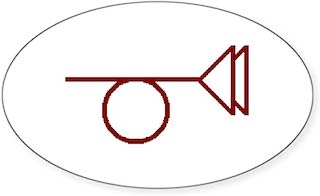
Amjad Ali Khan: Leading a project designed to raise awareness of the AAPI struggle to restore harmony amid the discord created by discrimination, victimization and violence
By Neil Sorrell
MUSIC FOR HOPE
Amjad Ali Khan-Wu Man
With Amaan Ali Bangash, Ayaan Ali Bangash, Shane Shanahan
ZOHO
The cultural dominance of China and India in Asia stretches back thousands of years. Their musics are quite distinct though they share many significant features, especially highly developed modal systems. Because these find their most sophisticated expression in single melodic lines, often improvised, it is often asserted that they lack harmony, but that is an over-simplification, as this recording demonstrates. Harmony means so many different things, not only within music theories, but also on a human level.

Wu Man
These musicians, from diverse musical traditions, are already seeking harmony by coming together to make a new music and are finding it by responding to each other in their musical creativity. Harmony is a joining together of peoples and cultures, not just musical phrases and responses. The principal aim of this project is to support the AAPI movement and raise awareness of its struggle, which can be seen as the restoration of harmony amid the discord created by discrimination, victimization and violence. AAPI stands for Asian-American and Pacific Islander, a group that comprises dozens of ethnicities and many more languages and dialects, harmonized by their common objective of resisting discrimination.

‘Rhythm of Life,’ Wu Man, Amaan Ali Bangash and Ayaan Ali Bangash, Shane Shanahan, from Music for Hope
The musicians expressing this power of music, transcending national boundaries, are leading virtuosi on their instruments, and all have ventured extensively into cross-cultural collaborations. Both Wu Man and Shane Shanahan are founding members of Yo-Yo Ma’s Silkroad project, and Wu Man remains an active touring and teaching member of the Silkroad Ensemble. Amjad Ali Khan and his two sons, Amaan Ali Bangash and Ayaan Ali Bangash, represent the sixth and seventh generations of a family of sarod masters.
Despite obvious differences in appearance, the Indian sarod and Chinese pipa (Wu Man’s instrument) are leading members of the plucked lute extended family. The pipa is made of wood, pear-shaped, with a fretted fingerboard and four strings; the sarod has a narrower wooden body, covered with goatskin, and a fretless metal fingerboard, the key factor in enabling the slides that are essential to Indian music. In addition to the playing strings there are drone strings and an extra set of sympathetic strings.
Both Wu Man and Amjad Ali Khan and his family have contributed enormously towards the establishment of their instruments on the world stage. Hope, looking to a better future, is expressed by these five artists through this coming together; their harmony is immediate.

‘Maya,’ Amjad Ali Khan, Wu Man, Shane Shanahan, from Music for Hope
On ‘Stream of Love,” Wu Man, Amaan Ali Bangash and Ayaan Ali Bangash follow the Indian structure of a slow improvised opening section in free rhythm, in the pentatonic North Indian Raga Durga, to which Wu Man responds with improvisations in the corresponding Chinese pentatonic mode. On “Rhythm of Life,” Wu Man, Amaan Ali Bangash and Ayaan Ali Bangash are joined by Shane Shanahan for a rhythmic composition and further improvisations in Raga Durga, with drum accompaniment.
In “Beyond Borders,” Amjad Ali Khan and Wu Man follow the same structure, starting with a slow improvised section in free rhythm, this time in the South Indian Raga Vachaspati, which uses a seven-note scale, with a sharp fourth and flat seventh, and a touch of the flat sixth. Wu Man effortlessly extends her pitch set accordingly in her improvisations, thereby dispelling the misconception that Chinese music is all pentatonic.

‘Of Tradition and Heritage,’ Amjad Ali Khan, Wu Man, Shane Shanahan, from Music for Hope
On “Maya,” Amjad Ali Khan and Wu Man are joined by Shane Shanahan for a rhythmic composition and further improvisations in Raga Vachaspati, with drum accompaniment.
In the final track, “Of Tradition and Heritage,” the spirit of improvisation and search for new harmonies are perhaps at their freest. Amjad Ali Khan, Wu Man and Shane Shanahan combine melody and rhythm in the Raga Zila Kafi, a relatively flexible classical structure that uses a seven-note scale, akin to the D-mode, with the possibility of introducing sharpened or flattened versions of notes.



